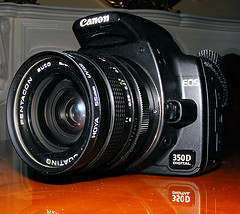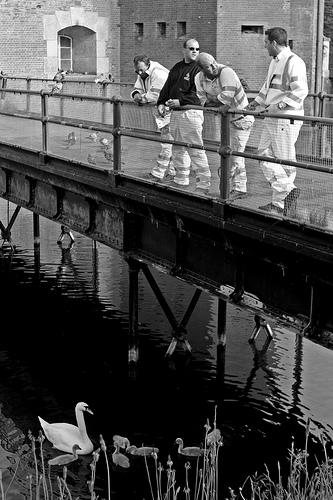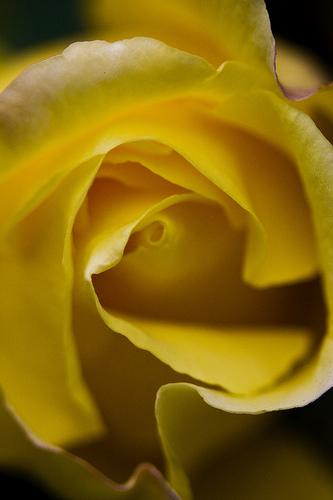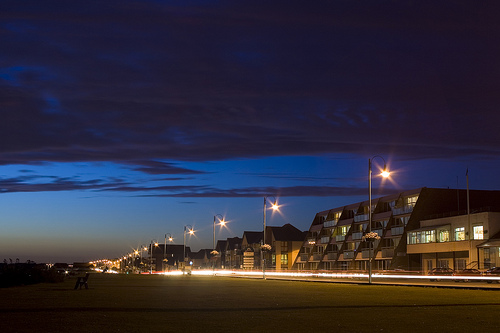Don’t Forget About Those Old M42 Lenses For Your Modern dSLR…
This is a guest post by Rob, from robnunnphoto.com.

If, like me, you’re a photographer on a very tight budget, one of the hardest things to come to terms with is how expensive lenses are for your dSLR. Apart from the “Nifty Fifties”, which for most manufacturers can be had for around $100, new lenses are hundreds, if not thousands, of dollars.
Fear not though – there is another way, where you can buy lenses for a few dollars, rather than a few hundred – M42 Lenses. M42 refers to the type of screw mount these old lenses use, and it was a standard for companies like Zenit, Praktica, and Pentax for many years. There are also lots of other lens manufacturers who produced M42 lenses from the ‘50s to the ‘70s, when Auto-Exposure, and a little later, Auto-Focus, rendered a screw type mount impractical.

To fit these lenses you’ll need an M42 adapter (available on eBay), which is normally just a piece of machined and finished metal, with a bayonet fitting on one side and a screw mount on the other. Having no electrical connection, you then have to focus, change the aperture, and meter manually, but this is a good learning experience and gets easier with practice. If you’re using Canon you can set your command wheel to Aperture Priority, and your camera will adjust the shutter speed automatically as light levels change or you change the lenses aperture.
Some M42 Lens Mount Adapters include an optic, and it’s always best to check compatibility of your camera body with a particular lens. Some old lenses protrude into the body of the camera, and this can cause problems with hitting the mirror.

I get my M42 lenses from car-boot sales, second hand shops, thrift stores and charity shops. There’s a thriving market on eBay, but the most popular and highest quality can demand steep prices. I normally just look for old 35mm Film Cameras that are clean, I make sure the lens works, then pay a couple of quid at a car-boot sale.
Most M42 lenses are fixed-focal length prime lenses – zooms just weren’t made for M42 in great quantities, and their optical qualities weren’t as good. Using a prime teaches you to zoom “with your feet”, a good skill to develop for everyone anyway!
The most common focal length of lenses you’ll find are 28mm, 35mm, 50mm and 135mm. Wider lenses are very rare, but you may come across the odd ultra-long telephoto prime – and normally at prices that are unbelievably cheap.
LENS CHECK LIST
Before you hand over the cash for a M42 lens, you want to check a few things:
- Is it really an M42 Thread? Make sure you bring your lens-mount adapter (I actually use an extension tube) along to test it is what you think it is. There are other screw-mounts that aren’t compatible.
- Is the glass clean? You’re looking for mould, fungus or big scratches. Any lens that looks a bit cloudy or has things growing in it should be passed over. Expect to see surface scratches on most old lenses – don’t worry, it won’t affect your photographs.
- Does the focus turn smoothly? We don’t want any grinding or stiffness.
- Do the aperture blades work? A real important one this. If a lens has been sitting in an attic for 40 years, chances are any lubricants inside will have dried out, so those blades could be stuck. Look for a pin sticking out of the back of the lens. Press it in, then look through the lens while turning the aperture ring. You should see the aperture blades opeing and closing. Ask yourself if the lens is opening up all the way to its biggest aperture (biggest hole, smallest f number), and closing up to its smallest aperture (smallest hole, biggest f number). You’ll often find lenses where the blades only open up so far. Put the lens down and move on.
- Is it a decent piece of glass? A tricky question this – unless you’ve got a really good memory, chances are you won’t be able to remember which are the lenses, brands and models you should be looking for. My rule of thumb is to look at the maximum aperture. Lens manufacturers don’t tend to make poor fast glass. So if the lens is a 50mm, I’m looking for at least an f/1.8 aperture. For 28mm to 135mm I’m looking for f/2.8. With longer glass the bigger the aperture the better, and be aware that Zoom Technology wasn’t at it’s best in the M42 era, so don’t expect great results from non-primes. (Although M42 Zooms, combined with extension tubes, are great for macro work.)

ACCESSORIES
That brings me nicely onto the accessories that you want to be looking for as you’re on your hunt for M42 lenses. First up we want a selection of extension tubes. These are simple hollow tubes of various lengths, that allow you to take incredible macro shots.
Teleconverters look like extension tubes, but have a small glass optic inside. These handy gadgets multipy the focal length of your lens, usually by 1.6 or 2 times. Inspect them for scratches and fungus. Using a teleconverter does cut down the amount of light coming into your camera, and they do degrade the image, but they are fun to play around with.
Filters. With all your new lenses you’ll need filters. Don’t bother with UV protection filters, these lenses are cheap anyway, so why put another piece of cheap glass in the way? Look for CIrcular Polarizers (C-PL) to reduce glare and increase colour saturation. You may find Linear Polarizers. These have the same effect, but could affect the metering of your camera. If you’re shooting fully manual, this doesn’t matter one bit. Look out for special effects filters – soft-focus, star-bursts, grads and neutral density. Coloured filters aren’t that useful if you shoot in colour and convert to b&w in post, but they can add a fun look to your images. Keep an eye out for Cokin Filters, holders, and adapters – a whole world to explore!
Lens Hoods. Very, very, important. The coatings on modern lenses that keep our photographs contrasty and flare-free are probably missing from these old M42 lenses, so the best practice is to always use a lens hood.

MY EXPERIENCES
I particularly like my Pentacon 29mm f/2.8, and my Helios 135mm f/2.8. I use my Soligor 90-230mm with extension tubes for macro work, and I’m currently playing around with a Hanimex 200mm f/3.3. There’s no way I could afford to buy the equivalent Canon EF primes of these focal lengths, and half the fun of using these lenses is paying a couple of pounds for them at car-boot sales, then seeing the wonderful images they produce.
WHAT TO DO NEXT
Go on eBay and buy a lens-mount adapter for your digital body. Just search for “M42 Lens adapter Canon” or whatever model of camera you’ve got. Do a little research on the ‘net as to what lenses you could be looking for, then get out at those garage sales, thrift stores and flea-markets to hunt out those bargains. Have fun and marvel at the prices you’ll pay for lenses that are perfectly good enough for the majority of photographers.
Thanks for reading! Rob.
You can read more about Rob and his photography at robnunnphoto.com.
(All photos in this article were taken with a Canon 350d dSLR and M42 Lenses).

FURTHER READING
M42 Lens Mount Adapters On Ebay.com.
Compatibility list of M42 and manual lenses on Canon EOS 5D. (And Other Makes)
HAVE YOUR SAY!
Have you used M42 lenses, on a dSLR or perhaps on the original Film Body? What have your experiences been? What are your favourite lenses, and what has been your best buy? Please add your comments below!